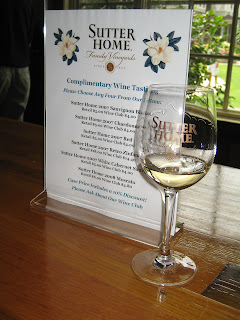"Fortified Wines" are simply wines that have an addition of distilled grape spirits made to the wine base at some point before, during, or after fermentation. The two big ones that I will talk about here are Sherry and Port. Madeira is a third classification of "Fortified Wines," but I think Sherry and Port are a bit more popular and easier to adjust to, so I will make an obvious absence of Madeira in this post. However, Madeira is quite interesting if you get a chance to taste it.
I used to be somewhat prejudice against these two wine styles - not really enjoying them to their full potential. But I have to admit that there is a time and place for "Fortified Wines" that can be enjoyable and fun. My first post will be on Sherry:
Sherry
I found this classification chart in my "Total Wine & More" catalog and thought it was so good that a reproduction would be appropriate:
(Chart from Total Wine & More)
The basic classification breakdown in Sherry styles is between Fino and Oloroso. With Fino, the alcohol fortification is usually lower than Oloroso and is produced with a greater influence of flor, or the naturally occurring yeast that forms on the surface of the wine. With flor, the wine does not undergo as much oxidation as it is protected by the yeast. You can see this first break in the chart above. Oloroso, on the other hand, has a higher alcohol content (greater fortification) and is matured without flor. The absence of flor allows for a greater oxidation, deep brown color, and richer nutty and raisin-like flavors.
Most Sherries are started with Palomino grapes, which have very little flavor and are low in acid (or have a high pH). These grapes are ripened excessively to obtain a high sugar content (which is converted to a high alcohol content) and left to shrivel in the sun after picking. Traditional Sherry includes a gypsum addition. The actual scientific reason for the gypsum (or calcium sulfate) addition is yet to be fully explored, but we know that gypsum reacts with potassium bitartrate to produce calcium tartrate (which is insoluble), potassium sulfate, and tartaric acid. Additionally, it encourages the growth of the flor yeast. As Sherry is aged, the wine is racked off from the precipitate, or the insoluble components.
I really like this picture from Wikipedia that shows the flor yeast (the tan layer near the top of the barrel) and Sherry precipitate (tan layer in the curved part at the bottom of the barrel)
Sherries are aged in a solera system, which is essentially a "fractional blending" system. The solera represents how complicated and time consuming Sherry can be. In the most simplest explanation, the oldest or longest-aged Sherry is drained from the bottom of the solera. This Sherry is then used for blending and bottling. To refill the bottom stage, Sherry from the stage above it is drained and divided into all the barrels below. This goes on and on up the pyramid. When the top stage is drained and divided, it is refilled with fresh Sherry or Sherry being stored in the "nursery." The bottom graphic from australiawine.com illustrates this explanation:
Food Pairings with Sherry:
1) lobster bisque (good with Fino Sherry)
2) cheesecake
3) vanilla ice cream
4) mixed nuts
5) puddings
6) very garlic foods (good with Oloroso Sherry)
7) foie gras
8) light blue cheeses (good with Fino Sherry)
Sherry Producers to Try (Thrifty, yet Fun!):
1) Osborne ($10 - $16 depending on Sherry style)
2) Don Benigno (~$10)
3) Harvey's Bristol Cream Sherry (~$12; a good introductory, sweet Sherry)







